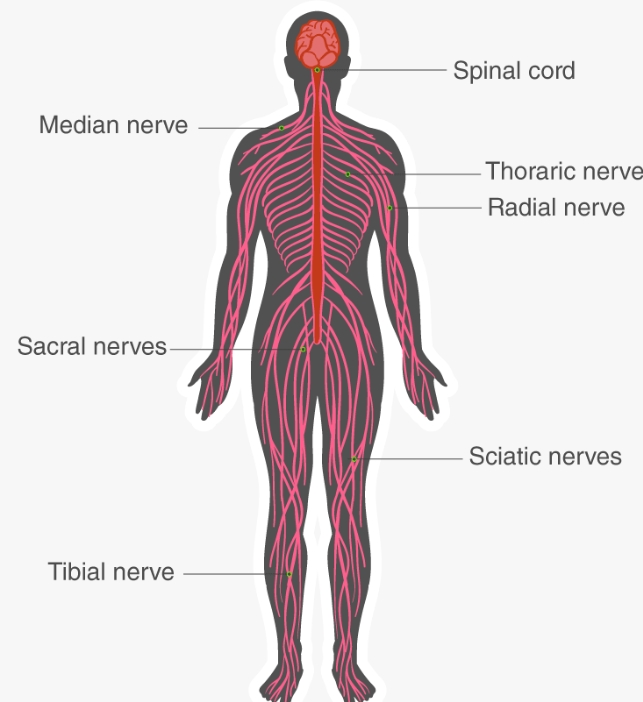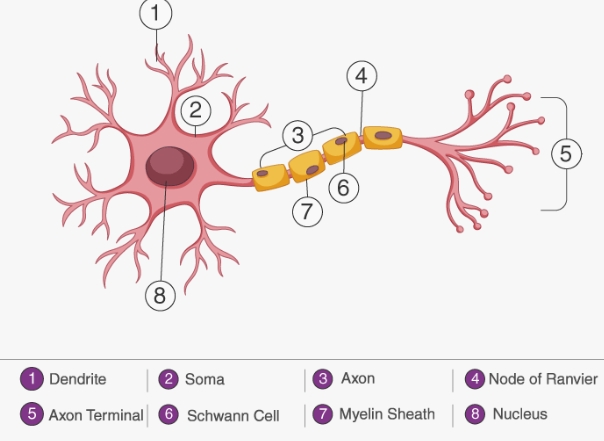
Human Nervous System: The nervous system is like the body’s control center. It helps you think, feel, and move. It has two main parts: the brain and the spinal cord.
The brain controls everything you do, like talking, walking, and even remembering things. The spinal cord sends messages between the brain and the rest of your body. The nerves are like tiny wires that carry these messages to every part of your body. This system helps you respond to things around you, like feeling hot or cold, and helps your body work smoothly. It’s what keeps you safe and active!What is Human Nervous System?
The nervous system is like a super-fast messaging system in your body. It helps you feel things, move your muscles, and think. It has two main parts: the brain and the spinal cord.
The brain is like the control center, sending messages to different parts of the body. The spinal cord is like a highway that carries these messages back and forth.
Human Nervous System FAQs
Is nervous system necessary?
The nervous system helps all the parts of the body to communicate with each other. It also reacts to changes both outside and inside the body. The nervous system uses both electrical and chemical means to send and receive messages.
What are the two main parts of the nervous system?
The nervous system is made up of the central nervous system and the peripheral nervous system: The central nervous system includes the brain and spinal cord. The peripheral nervous system includes the nerves that run throughout the whole body.
How many neurons are in the human brain?
86 billion neurons
What is the basic unit of the nervous system?
The basic unit of the nervous system is a nerve cell, or neuron.
Where is the nervous system located?
Your central nervous system is located within your dorsal (back) body cavity. This includes the inside of your head and at the back of your trunk.
Talk to a counsellorHave doubts? Our support team will be happy to assist you!

Check out these Related Articles
Free Learning Resources
PW Books
Notes (Class 10-12)
PW Study Materials
Notes (Class 6-9)
Ncert Solutions
Govt Exams
Class 6th to 12th Online Courses
Govt Job Exams Courses
UPSC Coaching
Defence Exam Coaching
Gate Exam Coaching
Other Exams
Know about Physics Wallah
Physics Wallah is an Indian edtech platform that provides accessible & comprehensive learning experiences to students from Class 6th to postgraduate level. We also provide extensive NCERT solutions, sample paper, NEET, JEE Mains, BITSAT previous year papers & more such resources to students. Physics Wallah also caters to over 3.5 million registered students and over 78 lakh+ Youtube subscribers with 4.8 rating on its app.
We Stand Out because
We provide students with intensive courses with India’s qualified & experienced faculties & mentors. PW strives to make the learning experience comprehensive and accessible for students of all sections of society. We believe in empowering every single student who couldn't dream of a good career in engineering and medical field earlier.
Our Key Focus Areas
Physics Wallah's main focus is to make the learning experience as economical as possible for all students. With our affordable courses like Lakshya, Udaan and Arjuna and many others, we have been able to provide a platform for lakhs of aspirants. From providing Chemistry, Maths, Physics formula to giving e-books of eminent authors like RD Sharma, RS Aggarwal and Lakhmir Singh, PW focuses on every single student's need for preparation.
What Makes Us Different
Physics Wallah strives to develop a comprehensive pedagogical structure for students, where they get a state-of-the-art learning experience with study material and resources. Apart from catering students preparing for JEE Mains and NEET, PW also provides study material for each state board like Uttar Pradesh, Bihar, and others
Copyright © 2025 Physicswallah Limited All rights reserved.
Get App










